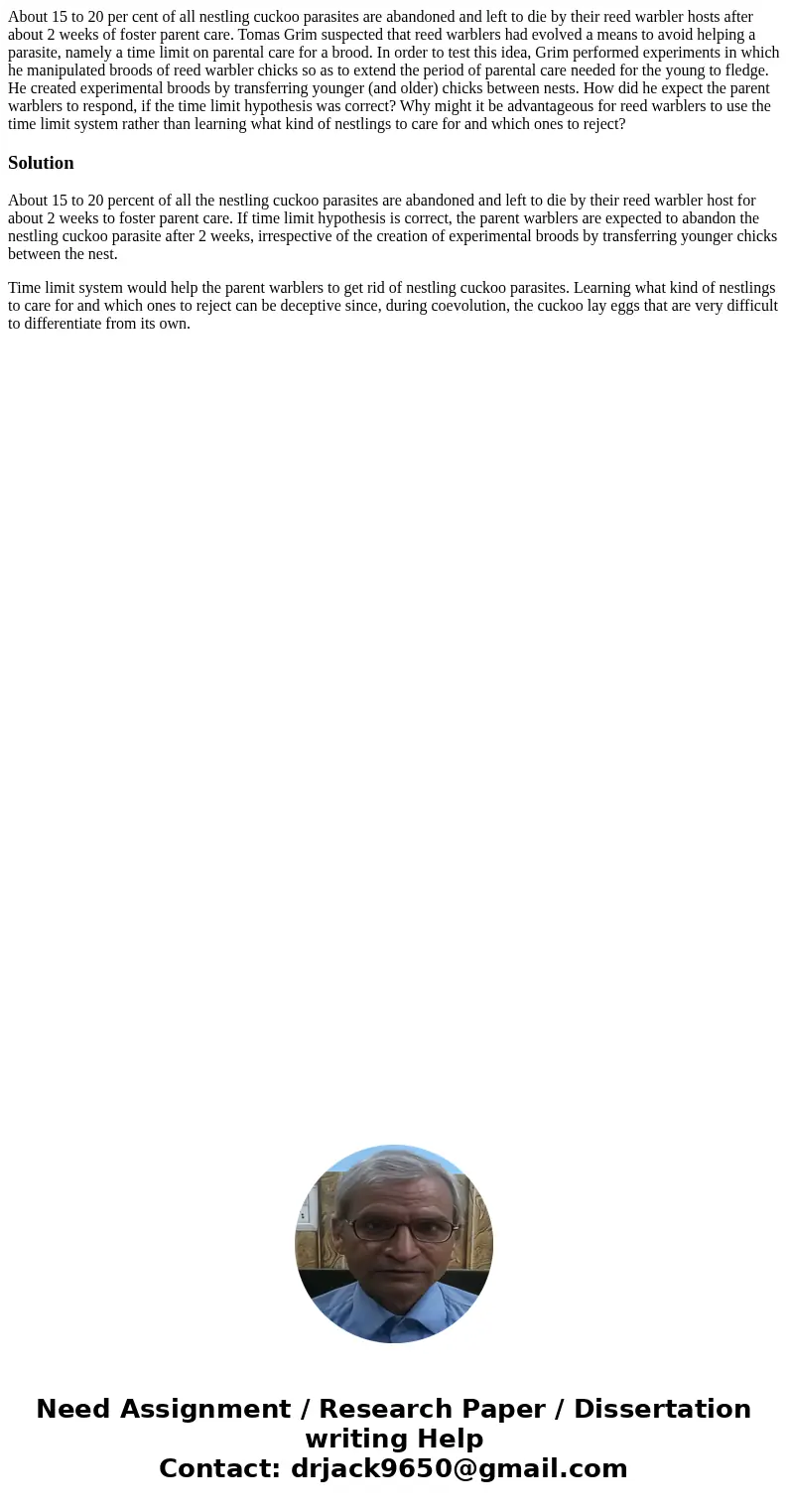About 15 to 20 per cent of all nestling cuckoo parasites are
About 15 to 20 per cent of all nestling cuckoo parasites are abandoned and left to die by their reed warbler hosts after about 2 weeks of foster parent care. Tomas Grim suspected that reed warblers had evolved a means to avoid helping a parasite, namely a time limit on parental care for a brood. In order to test this idea, Grim performed experiments in which he manipulated broods of reed warbler chicks so as to extend the period of parental care needed for the young to fledge. He created experimental broods by transferring younger (and older) chicks between nests. How did he expect the parent warblers to respond, if the time limit hypothesis was correct? Why might it be advantageous for reed warblers to use the time limit system rather than learning what kind of nestlings to care for and which ones to reject?
Solution
About 15 to 20 percent of all the nestling cuckoo parasites are abandoned and left to die by their reed warbler host for about 2 weeks to foster parent care. If time limit hypothesis is correct, the parent warblers are expected to abandon the nestling cuckoo parasite after 2 weeks, irrespective of the creation of experimental broods by transferring younger chicks between the nest.
Time limit system would help the parent warblers to get rid of nestling cuckoo parasites. Learning what kind of nestlings to care for and which ones to reject can be deceptive since, during coevolution, the cuckoo lay eggs that are very difficult to differentiate from its own.

 Homework Sourse
Homework Sourse